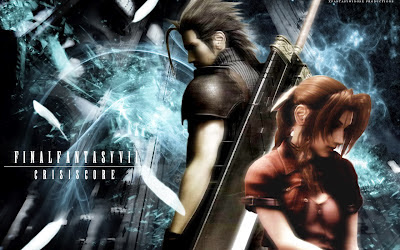The article mentioned, of course, how tired consumers are getting of the current gen systems and the cyclical money machine that the industry has become. Whatever the next gen systems are like, Minkley hit the nail on the head when he said that "the first thing to say is it had bloody better be a 'quantum leap' from the creaking innards of today's systems."
A quantum leap would be nice. More processing power, graphical capability, memory and refined tech could really help those suffering from constant Red Ring fear. Not to mention some tighter online security. Yes, Sony, I'm looking at you. But even shiny bells and whistles will not really "sell" the consoles to consumers. Sure, people will buy the systems out of habit, but will we really see them as the next gen that we've been waiting for?
Minkley said "looking at every single launch title across PS2, Xbox, Xbox 360 and PS3, I see only a single, clear system-seller in there: the original Halo." I have to agree with him, despite my own indifference to the series. When "Halo" came out with the original Xbox system, that was what I associated Microsoft's gaming platform with, "Halo." I couldn't for the life of me tell you what came out with the PlayStation 2, and the only thing that stuck out for the PS3 was "Uncharted" due to its graphical glory and interesting story. The Wii, obviously, was heralded in with "Red Steel" and other such failures, much to Nintendo fans' dismay.
 |
| Remember this? Of course you do. |
But hidden in the middle of the article and a little at the tail end is the real point that Minkley nailed. Microsoft may pull ahead if it begins to make deals with cable providers and offer some sort of package deal with the new next gen Xbox's to give television as well as gaming. This would be a brilliant move and that kind of diversification of tech is what is selling most frequently these days.
Many bought a PS3 solely due to the fact that it came with a Blu-ray player installed in it. Even Blu-ray, though, had difficulty achieving widespread success. Had it become the dominant form of in-home digital media, the PS3 would have trounced any sort of effort by Microsoft or Nintendo, simply because of the system's versatility.
Next gen systems may begin fighting to provide the consumer with a jack-of-all-trades rather than a quality gaming experience alone. Personally, this makes me weep for the future of gaming if we're just trying to make compact computers that display on televisions rather than machines built to provide us with the most streamlined gaming experience we can. Really, that's what these machines have become, and if I had wanted that I would have just upgraded my PC over the years and not cared about getting a system at all.
Minkley says that the war might be fought over contracts and who can give us more bang for our buck when it comes time for release. I think he's right. What the fight should be over, though, is who can make the next "Halo" type game and really make something that draws people to buying the system rather than just giving us a load of expected next gen titles and then waiting a year for something truly special.































